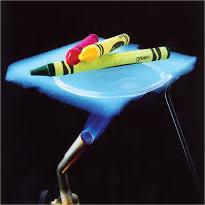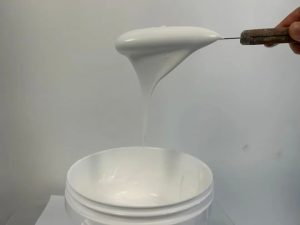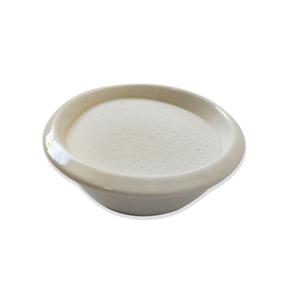Professional industry ceramic supplier, silicon nitride, silicon carbide, aluminum nitride and any other kinds of ceramics.
1. Introduction
In a major development just 24 hours ago, a leading U.S. advanced ceramics manufacturer announced a breakthrough in sintering technology that significantly boosts the thermal shock resistance of silicon carbide crucibles—potentially reshaping how foundries and labs handle molten metal processing. This news underscores a growing industry shift toward high-performance, durable ceramic solutions.

Silicon carbide crucibles have long been prized for their exceptional hardness, thermal conductivity, and resistance to chemical corrosion. But with so many advanced ceramic options—from zirconia crucibles to silicon nitride rings—it’s easy to get lost in the details. In this deep-dive listicle, we’ll compare key materials and applications to help you understand where silicon carbide truly shines (and where it might not be the best fit).
2. Silicon Carbide Crucible vs. Other Ceramic Crucibles
2.1. Silicon Carbide vs. Alumina (Al2O3) Crucibles
Alumina crucibles, made from aluminum oxide (Al2O3), are widely used due to their affordability and decent thermal stability up to ~1,700°C. However, they fall short in thermal shock resistance compared to silicon carbide. A silicon carbide crucible can handle rapid temperature changes without cracking—critical in metal casting or lab environments where heating and cooling cycles are frequent.
- Silicon carbide crucibles conduct heat 3–5x better than alumina.
- Alumina is more chemically inert with certain reactive metals, making it preferable in specific analytical chemistry contexts.
2.2. Silicon Carbide vs. Zirconia Crucibles

Zirconia (ZrO2) crucibles offer higher melting points (~2,700°C) and superb resistance to molten oxides, but they’re brittle and expensive. Silicon carbide, while slightly lower in max operating temperature (~1,650°C in oxidizing atmospheres), provides superior mechanical strength and thermal cycling performance.
For applications involving non-ferrous metals like aluminum or copper, silicon carbide crucibles are often the go-to choice due to their balance of cost, durability, and performance.
3. Boron Carbide vs. Silicon Carbide: Not Just for Armor
While both boron carbide (B4C) and silicon carbide are ultra-hard ceramics used in ballistic armor, their differences matter in industrial settings. Boron carbide is harder (30 GPa vs. 25 GPa for SiC) but more expensive and harder to machine. Silicon carbide offers better oxidation resistance above 800°C and is far more common in furnace components.
You’ll find silicon carbide ceramic tiles, rbsic silicon carbide tile blocks, and silicon carbide brick lining industrial kilns—not boron carbide. The latter is reserved for niche, extreme-wear applications where cost is secondary to hardness.
4. Silicon Carbide vs. Silicon Nitride in High-Temp Components

Silicon nitride (Si3N4) is another advanced ceramic gaining traction, especially in custom silicon nitride heat shields, silicon nitride rings, and even silicon nitride crucible factories producing lab-grade containers. While silicon nitride excels in fracture toughness and creep resistance, silicon carbide outperforms in thermal conductivity and wear resistance.
For example:
- Silicon carbide burner nozzles handle abrasive combustion gases better.
- Silicon nitride ceramic plates are preferred in high-stress rotating parts like turbine blades.
Both materials are part of the broader advanced ceramics family, but their selection hinges on whether thermal management (SiC) or mechanical resilience under load (Si3N4) is the priority.
5. Beyond Crucibles: The Expanding Universe of Silicon Carbide Ceramics
Interestingly, silicon carbide isn’t just for industrial furnaces anymore. Designers and manufacturers are now leveraging its aesthetic and functional properties in consumer goods—though often under different branding (e.g., ‘silicon carbide baking ceramic dish’ or ‘silicon carbide ceramic dinner plates’).
Products like silicon carbide ceramic casserole dishes, butter dishes with lids, and even children’s plates are appearing in premium kitchenware lines. These items capitalize on SiC’s natural black or gray hue, high heat retention, and chip resistance—though true structural silicon carbide is rare in dinnerware; most are composites or glazes inspired by its look.
Meanwhile, technical applications continue to grow:
- Silicon carbide ceramic tubes are standard in tube furnaces and thermocouple protection.
- Silicon carbide discs power grinding tools, including diamond grinding discs for pottery.
- Silicon carbide ceramic piping handles corrosive fluids in chemical plants.
Even plumbing has adopted it: silicon carbide ceramic disc taps and quarter-turn valves benefit from the material’s wear resistance and smooth sealing surfaces.
6. Conclusion
Silicon carbide crucibles remain unmatched for many high-temperature, high-wear applications—but they’re just one facet of a much broader advanced ceramics landscape. Whether you’re choosing between silicon carbide and zirconia for labware, evaluating boron carbide vs. silicon carbide for armor, or exploring silicon nitride alternatives for engine components, understanding the nuanced trade-offs is essential. As manufacturing innovations continue—like the recent sintering advance—silicon carbide’s role across industries will only expand.
Our Website founded on October 17, 2012, is a high-tech enterprise committed to the research and development, production, processing, sales and technical services of ceramic relative materials such as 5. Our products includes but not limited to Boron Carbide Ceramic Products, Boron Nitride Ceramic Products, Silicon Carbide Ceramic Products, Silicon Nitride Ceramic Products, Zirconium Dioxide Ceramic Products, etc. If you are interested, please feel free to contact us.





